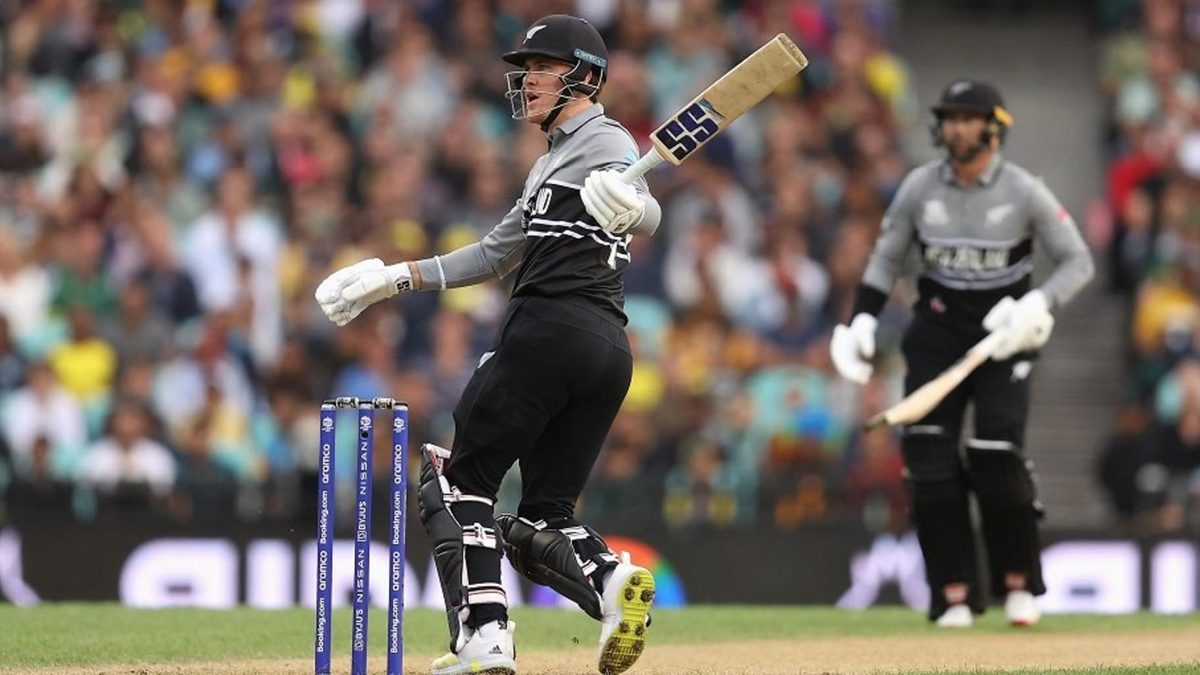
The butterfly effect of Finn Allen’s 16-ball onslaught knocked Australia out of the 2022 T20 World Cup. His ilk will be celebrated more in the years to come, writes Abhishek Mukherjee.
It has been nearly 11 years since Trent Boult played his first international match, in 2011/12. He took 3-29 and 1-51 as New Zealand won that Test match, in Hobart, by seven runs. Earlier this year, Boult requested to be released from New Zealand Cricket’s central contract.
Over this period, New Zealand had not won a single match against Australia in Australia in any format. Thus, history was stacked against them when they took field in their tournament opener at the Sydney Cricket Ground.
Australia bowled first. Their pace attack boasted of Mitchell Starc, Josh Hazlewood, Pat Cummins, and Marcus Stoinis. All four needed to bowl inside four overs, because their famed phalanx had been run over by Allen’s assault that read .46.4.1444.6261 – to sum up, 42 runs in 15 balls.
The usual phrases like ‘pressure matches’ and ‘crunch situations’ that often dominate conversations during World Cups – and had surfaced when Brendon McCullum failed in a similar attempt against Australia in Australia in 2015 – did not seem to apply to Allen or his see-ball-hit-ball method.
Allen failed in the next match, against Sri Lanka. Against England, he lasted 11 balls for his 16. Against Ireland, 18 balls for 32. His tournament strike rate stands at 190 – but he is yet to outlast the powerplay.
It is not an aberration. In his 22-match T20I career, Allen has batted outside the powerplay only thrice. These also remain his only scores in excess of 50 runs – or 25 balls. On an average, he lasts 15 balls an innings.
At the same time, with a 500-run cut-off, his strike rate (166) is the second-best in the history of T20I cricket – after Suryakumar Yadav’s 177 – among teams inside the first 35 as per ICC rankings. In fact, in all Twenty20 cricket, his strike rate of 172 is the best with a 1,000-run cut-off.
In internationals as well as in all Twenty20, Allen hits a boundary (four or six) every 3.8 balls. This is a staggering number. For perspective, Andre Russell hits one every four balls in all Twenty20, and one every 4.6 balls in T20 Internationals.
In other words, the average Allen innings is opening batting and adopting a high-risk approach to find boundaries. If he bats for long, it is excellent news for the side. If he does not, he still gets the side off to an incredible start.
The only question that stands between him and potential Twenty20 greatness is perhaps whether 15 balls per innings (16 in all Twenty20) are enough for a specialist batter. Of course, Allen can keep wickets, but New Zealand are yet to ask that of him.
Or whether it is enough to pick a cricketer whose impact lasts is expected to last less than one side’s powerplay, which itself amounts to only 15 per cent of a 40-over match.
The baggage Twenty20 carries
For centuries, innings used to end when the batting side ran out of one resource – wickets. Overs came into picture much later, and when they did, they were seldom fewer than 50. Unless they arrived very late into the innings, batters had the time to play themselves in. Openers did not need to deviate much from the traditional belief of giving the first half-hour to the bowler.
The introduction of the powerplay (the word was not coined immediately) changed the definition of the ODI opener. Teams promoted hitters up the order to take advantage of the fielding restrictions. Over time, these openers would learn to play out an over or two, found the gaps or hit over the top, and once the field was pushed back, the focus switched to singles.
In other words, they changed their existing approach – but there was still time. If a side had seven people capable of batting, a batter had to last 43 balls on an average. If they had eight, that dropped to 38. But it was still a lot of time to go through the entire range of gears.
Twenty20 changed that. Since there are only 120 balls, the corresponding counts per batter drop to 17 and 15. In other words, Allen’s innings is roughly of the same duration of the expected innings from a Twenty20 batter. In fact, his balls-per-dismissal count is comparable to Russell’s (13 in T20Is, 16 in all Twenty20).
Allen lasts slightly longer than and scores at a rate slightly quicker than one of the most-feared batters in the history of the format. What makes him less celebrated – apart from longevity – is perhaps the fact that most of us are conditioned to expect top-order batters, particularly openers, to bat longer than ‘finishers’.
In another country, Prithvi Shaw (18 balls per dismissal, strike rate 152) finds himself out of reckoning as well. It took an injury to Fakhar Zaman for Mohammad Haris (16 balls, 138 – but 186 in 2022) to finally get a chance. Had they batted at No.6 or thereabouts, their ilk would have been hailed for these numbers. Since they open batting, the duration of their innings becomes the focus ahead of the strike rate.
Nearly two decades ago, Twenty20 had inherited the Laws and personnel of the longer formats. Unfortunately, it also inherited some beliefs.
It will perhaps take time for the world to take to the role of the powerplay specialist. But once it does, there will be more of them, perhaps two in the same side – for why not make the most of the field placements? Even if you lose both inside two overs, you will still have eight wickets in hand with 18 overs left…








